Deborah Levy
Osmosis: RGBD Diffusion Prior for Underwater Image Restoration
Mar 21, 2024



Abstract:Underwater image restoration is a challenging task because of strong water effects that increase dramatically with distance. This is worsened by lack of ground truth data of clean scenes without water. Diffusion priors have emerged as strong image restoration priors. However, they are often trained with a dataset of the desired restored output, which is not available in our case. To overcome this critical issue, we show how to leverage in-air images to train diffusion priors for underwater restoration. We also observe that only color data is insufficient, and augment the prior with a depth channel. We train an unconditional diffusion model prior on the joint space of color and depth, using standard RGBD datasets of natural outdoor scenes in air. Using this prior together with a novel guidance method based on the underwater image formation model, we generate posterior samples of clean images, removing the water effects. Even though our prior did not see any underwater images during training, our method outperforms state-of-the-art baselines for image restoration on very challenging scenes. Data, models and code are published in the project page.
SeaThru-NeRF: Neural Radiance Fields in Scattering Media
Apr 16, 2023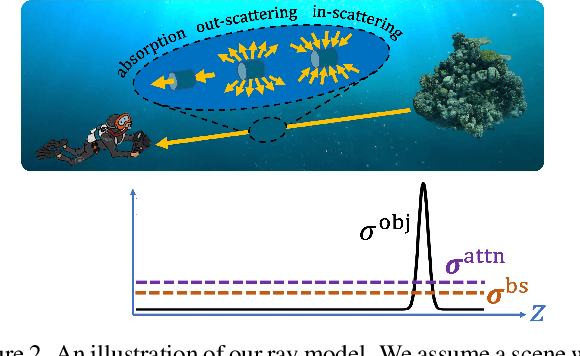
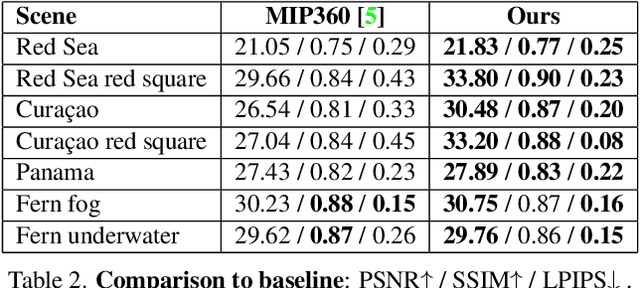
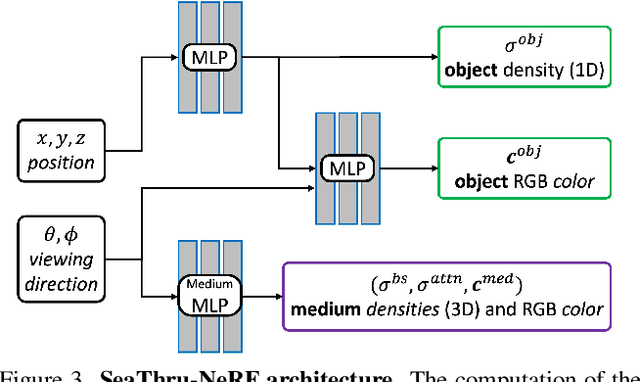
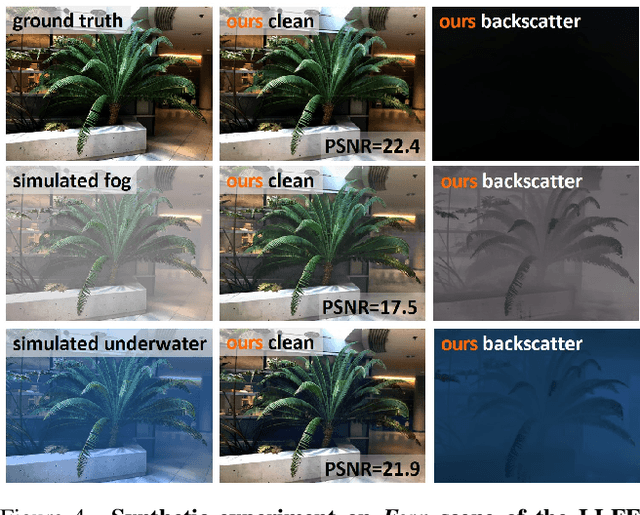
Abstract:Research on neural radiance fields (NeRFs) for novel view generation is exploding with new models and extensions. However, a question that remains unanswered is what happens in underwater or foggy scenes where the medium strongly influences the appearance of objects. Thus far, NeRF and its variants have ignored these cases. However, since the NeRF framework is based on volumetric rendering, it has inherent capability to account for the medium's effects, once modeled appropriately. We develop a new rendering model for NeRFs in scattering media, which is based on the SeaThru image formation model, and suggest a suitable architecture for learning both scene information and medium parameters. We demonstrate the strength of our method using simulated and real-world scenes, correctly rendering novel photorealistic views underwater. Even more excitingly, we can render clear views of these scenes, removing the medium between the camera and the scene and reconstructing the appearance and depth of far objects, which are severely occluded by the medium. Our code and unique datasets are available on the project's website.
Underwater Single Image Color Restoration Using Haze-Lines and a New Quantitative Dataset
Nov 06, 2018


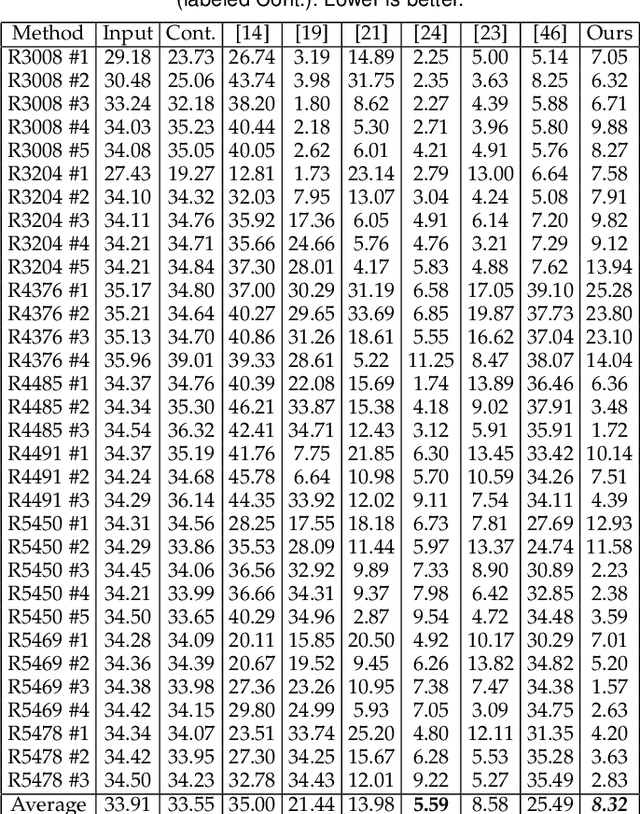
Abstract:Underwater images suffer from color distortion and low contrast, because light is attenuated while it propagates through water. Attenuation under water varies with wavelength, unlike terrestrial images where attenuation is assumed to be spectrally uniform. The attenuation depends both on the water body and the 3D structure of the scene, making color restoration difficult. Unlike existing single underwater image enhancement techniques, our method takes into account multiple spectral profiles of different water types. By estimating just two additional global parameters: the attenuation ratios of the blue-red and blue-green color channels, the problem is reduced to single image dehazing, where all color channels have the same attenuation coefficients. Since the water type is unknown, we evaluate different parameters out of an existing library of water types. Each type leads to a different restored image and the best result is automatically chosen based on color distribution. We collected a dataset of images taken in different locations with varying water properties, showing color charts in the scenes. Moreover, to obtain ground truth, the 3D structure of the scene was calculated based on stereo imaging. This dataset enables a quantitative evaluation of restoration algorithms on natural images and shows the advantage of our method.
 Add to Chrome
Add to Chrome Add to Firefox
Add to Firefox Add to Edge
Add to Edge